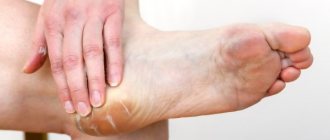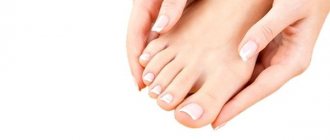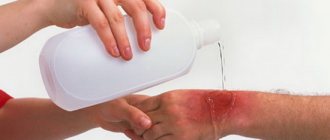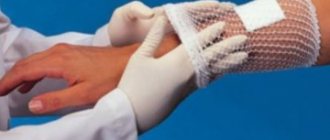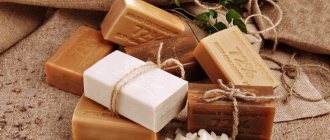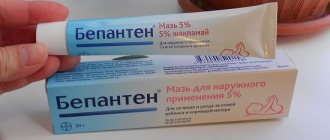Callus on the tongue, gum and mouth: how to treat with traditional and folk remedies
Not only children, but also adults often suffer from such a problem as a callus on the tongue or on the gum. This formation is not dangerous, but requires careful monitoring, since in case of frequent injury it can become inflamed, cause a lot of discomfort to the patient and require long-term treatment.
Causes
Calluses are often confused with stomatitis and pemphigus. This comparison is incorrect, since the main reason for the appearance of calluses is systematic trauma to the oral cavity.
In infants, injury occurs during feeding, especially if it is carried out not according to time, but at the request of the baby, and he remains at the breast for a long time. Rubbing of the thin mucous membrane occurs, as a result of which seals can appear not only on the tongue, but also on the palate and upper lip.
Adults suffer from the pathology most often after eating seeds, nuts, chewing candy and other hard foods. They may develop calluses on their gums or the roof of their mouth from wearing braces.
If wisdom teeth erupt incorrectly, sores may appear on the inside of the cheeks due to constant trauma.
A callus forms on the tongue after carelessly consuming hot food or drinks. Trauma to the mucous membrane occurs, which leads to tissue necrosis.
Symptoms
Externally, a callus looks like a compaction or a blister filled with liquid, it all depends on the nature of its occurrence.
In children, the formation looks like a blister; after a rupture, a whitish compaction appears in its place. In adults, the callus may have the same appearance; if it ruptures, there is a high risk of developing a small ulcer.
As a rule, patients do not feel any discomfort, their body temperature does not rise and fever does not occur. In general, such a formation is not dangerous; it requires special attention if it ruptures, since there is a high risk of infection in the wound.
Drug therapy
The goal of treatment is to prevent the infectious process at the site of the burst callus. The fact is that pathogenic microorganisms can quickly infect the deep layers of the mucous membrane and lead to infection of the oropharynx.
If a callus is detected in infants, it does not need to be treated; it will go away on its own after stopping breastfeeding. If the formation ruptures, you can treat the tissue with three percent hydrogen peroxide . The use of iodine or brilliant green is not recommended, as they can severely dry out the thin mucous membrane.
Adults can rinse their mouths with antiseptics, for example, Chlorhexidine. You should use mouthwash after every meal. It is also recommended to take a vitamin complex to strengthen the body's defenses.
If, after spontaneous opening of the callus, the patient feels increased pain, has an increase in temperature and general weakness, he should immediately consult a therapist. These symptoms may indicate the development of a bacterial infection, which in severe cases leads to the formation of purulent abscesses.
Traditional treatment
If a lump is found in a child, it is not recommended to resort to using any folk remedies on your own, as they can negatively affect the baby’s condition.
For adults, rinsing with antibacterial compounds is perfect. They will help prevent the development of inflammation in the injured area of the mucosa, and will also help maintain the cleanliness of the oral cavity.
An important addition: you can use traditional methods only if there are no allergic reactions to herbs. Otherwise, it is better to refuse alternative treatment.
The most effective recipes are described below:
- Salt rinse. To do this, dissolve a teaspoon of sea salt in a glass of warm water. Rinse your mouth after eating; after treatment, you should stop eating for at least an hour.
- Chamomile decoction. It is most convenient to use ready-made filter bags, which are sold at the pharmacy. You need to fill one such packet with a glass of boiling water, let it brew and use it to treat the oral cavity.
- Calendula. For this rinse you will need an alcohol solution. Twenty drops of tincture are dissolved in a glass of warm water and used after any meal, preferably before going to bed.
- Propolis. This beekeeping product has excellent antiseptic and healing properties . It is used in the amount of one teaspoon per glass of warm water.
The above recipes are not only effective, but also affordable, and if used regularly, they will help to avoid infection of the oral cavity.
Prevention
It is impossible to prevent the occurrence of calluses in the mouth in infants. As long as breastfeeding or artificial feeding continues, the delicate mucous membrane will be involuntarily injured. It is necessary to regularly examine the child’s oral cavity and prevent foreign objects or insufficiently clean toys from entering.
If there are suspicious symptoms, such as an increase in the number of calluses, a change in their color and structure, or a deterioration in the baby’s well-being, you should immediately consult a pediatrician.
The fact is that the oral mucosa is the first barrier to pathogenic microorganisms, and a violation of its integrity threatens the occurrence of an inflammatory process, the treatment of which can take a long time.
To avoid the development of calluses in the mouth, adults should not overdo it with eating hard and tough foods, which can injure the mucous membranes. You should temporarily discard the seeds or peel them by hand. The restriction includes eating too hot, salty or spicy food, as this is an additional factor that increases trauma.
Patients wearing braces should pay increased attention to oral hygiene. If the structures injure and rub the mucous membrane or the formation of calluses is promoted by the erupting wisdom teeth, you need to consult a dentist to solve the problem.
A callus in the mouth can form as a result of injury to the mucous membrane and, if detected and treated in a timely manner, goes away quickly. In advanced cases, the affected area may become infected, in which case more thorough and long-term therapy using antibacterial agents will be required.
Source: https://ProTravmy.com/mozoli/vo-rtu
What to do for prevention?
To prevent the formation of water blisters, it is recommended to avoid wearing tight, uncomfortable shoes. Be careful when choosing shoes for every day and for sports. The chosen model should immediately be comfortable and not oppressive. The skin on your hands should be protected with special gloves. When wearing closed shoes, be sure to wear socks to reduce friction between the skin and rough walls. If you experience excessive sweating of your feet, use special creams for hyperhidrosis.
How to treat a callus on the tongue
» Miscellaneous » How to treat a callus on the tongue
A callus on the tongue (tipun, pimple) is an inflammatory lesion of a certain area of the tongue, caused by the appearance of a crack in the mucous membrane and infection. In some cases, a pip on the tongue indicates serious illness, so you should not delay your visit to the doctor. Only he knows what to do for this or that patient in this case.
Quite often, microtrauma of the tongue in combination with insufficient oral hygiene leads to the development of glossitis. These injuries may be the result of mechanical damage (for example, from seeds or chewing candy), burns, or an infectious process. In some cases, the cause of a callus on the tongue is an allergic reaction.
Signs
When a callus appears on the tongue, the patient may feel a burning and tingling sensation. If the callus is located at the tip of the organ, numbness may also be present. With a large callus, the patient may complain of pain while eating. In this case, the tongue often swells, increases in size and becomes bright red.
The callus itself looks like a skin pimple, inside of which there is serous exudate. In the absence of proper treatment, this exudate is replaced by pus, resulting in the formation of an abscess on the mucous membrane.
Subsequently, a bleeding wound appears at the site of the callus. It brings the patient much more unpleasant sensations than a callus. In addition, it is more difficult to treat.
Drug treatment
Despite the fact that the callus causes a certain discomfort and, accordingly, the desire to pierce or scratch it, this is absolutely forbidden. Since this lesion is located on the mucous membrane, treatment should be as gentle and correct as possible. This is the only way to avoid complications. So how to treat calluses?
Most often, treatment of a callus on the tongue is carried out in the following order:
- The load is removed from the tongue. To do this, patients must give up salty, spicy, sour, hot, cold, as well as hard and scratchy foods. In general, until recovery, it is better to eat various cereals, broths and vegetable salads.
- Brushing your teeth should happen at least 2 times a day. After each meal, you need to rinse your mouth with antibacterial and anti-inflammatory agents. For this purpose, you can use Chlorhexidine, Furacilin or a weak solution of potassium permanganate. In addition, you can prepare your own decoction of sage or chamomile. For this you need 1 tbsp. l. dry herbs pour a glass of boiling water. The product is considered ready for use immediately after cooling. These decoctions are ideal for young children, as well as pregnant and breastfeeding women.
- To eliminate pain, you can use painkillers in the form of a spray (for example, Lidocaine).
- If you feel severe dryness in the oral cavity, you can treat it with anesthesin in combination with glycerin. These actions are performed only in a medical institution.
The situation is much worse with calluses on the tongues that have arisen against the background of ulcers and erosions. In this case, you need to clean your tongue from plaque.
For this purpose, special medicinal solutions are used (most often chymotrypsin and trypsin). At the end of the procedure, the tongue is treated with a weak, warm antiseptic.
At home, after this, to speed up the healing of the mucous membrane, the patient can use rosehip or peach oil, as well as Solcoseryl gel.
If the callus appears due to a decrease in the body’s defenses, the patient may be additionally prescribed immunostimulating medications (Isoprinosine, Lavomax), as well as vitamin and mineral complexes (Complivit, Alphabet, Perfectil).
If the callus becomes very hard, surgical treatment may be recommended. In addition, agents that eliminate pathogenic microflora present in the oral cavity must be prescribed. Antifungal medications, antibiotics and antivirals are used for this.
If the tongue is severely swollen, antihistamines and decongestants can be used.
If there is a strong increase in body temperature, antipyretic and anti-inflammatory drugs may be prescribed. If the patient’s tongue has enlarged and as a result, suffocation occurs, treatment can be performed with hormonal drugs.
Folk treatment of pipuna
To speed up the healing process, the patient can use non-traditional methods of therapy along with traditional ones.
Bee products are often used for this purpose. For example, propolis tincture or liquid honey. In this case, you need to lubricate the tongue in the affected area with medicines or apply a cotton pad soaked in the product to the tip and hold the compress for 10-15 minutes. Toothpastes containing propolis also have a healing effect.
Bee products quickly relieve inflammation, irritation and accelerate tissue regeneration. Despite their enormous benefits for the body, the use of honey by patients prone to allergic reactions is still not recommended, since in this case the risk of side effects cannot be excluded.
For calluses on the tongue, the juice of raw potatoes can be of great benefit. To do this, you need to take several medium-sized potatoes, peel them and grind them in a meat grinder, then squeeze out the juice using several layers of gauze.
You need to dip a cotton pad in the juice of this root vegetable, and then apply it to the affected area, but there is no need to press on the area. You need to hold such a compress for quite a long time (the longer the better), but in any case the procedure should not last less than 10 minutes.
With the help of such a compress, you can eliminate inflammation and draw fluid out of the tip.
Horseradish can also help in treating calluses. In this case, you need to pour 100 g of plant root minced in a meat grinder into 100 ml of distilled water.
After this, the container with the ingredients must be placed on the fire, brought to a boil and boiled in this way for 15 minutes. You need to make compresses from the prepared broth in the morning and evening for 5-10 minutes.
This remedy cauterizes the callus and relieves inflammation.
If you don't have horseradish root, you can use garlic. To do this, cut a clove of garlic in half and attach it to the tip. The course of treatment is until the symptoms of the disease disappear completely.
Possible complications
In the initial stages, callus is a completely harmless disease, but if not treated in a timely manner, it can lead to serious complications.
Among these are the spread of infection from the lesion to nearby tissues, the formation of warts, phlegmon of the tongue (purulent abscess) and the transition of the pathology to a chronic course.
In the latter case, the patient may eventually lose adequate taste perception, speech may be impaired, and salivation may increase.
The most dangerous complication of chronic callus on the mucous membrane is the development of a malignant tumor.
Source: https://kakvilechit.ru/raznoe/kak-lechit-mozol-na-yazyke.html
Calluses on the tongue: causes, signs, treatment and prevention of occurrence
A callus on the tongue (tipun, pimple) is an inflammatory lesion of a certain area of the tongue, caused by the appearance of a crack in the mucous membrane and infection. In some cases, a pip on the tongue indicates serious illness, so you should not delay your visit to the doctor. Only he knows what to do for this or that patient in this case.
Quite often, microtrauma of the tongue in combination with insufficient oral hygiene leads to the development of glossitis. These injuries may be the result of mechanical damage (for example, from seeds or chewing candy), burns, or an infectious process. In some cases, the cause of a callus on the tongue is an allergic reaction.
What it is?
Absolutely every person faces this phenomenon. A wet callus appears as a small blister with a thin upper membrane filled with clear liquid. A similar bubble occurs after prolonged work with tools or sports equipment. The longer the friction occurs, the larger the affected area, and therefore the size of the callus itself. These blisters most often appear on the soles of the feet, palms, fingers, and toes. People with highly sensitive skin are especially susceptible to this problem.
Callus on the tongue and mucous membranes of the mouth in children and adults: how to treat
True calluses in the mouth occur only on the lips, and they are observed exclusively in newborns.
The fact is that their skin is very delicate and vulnerable, so even a soft rubber nipple or mother’s breast can rub it.
A callus on the tongue, on the gum, on the palate, on the inside of the cheeks is actually a blister that can appear at any age as a result of microtrauma.
Causes and symptoms
A callus is a keratinization of the skin as a result of a protective reaction to mechanical friction or pressure.
If the body feels a threat to the integrity of any area of the skin or mucous membrane due to heavy load, it forms an additional layer of dead epithelial cells in this place.
In newborns, a similar formation may appear on the lips - it is called a milk callus. At first it looks like a bubble filled with a colorless liquid - phlegm.
This bubble may then burst and turn into a white lump. The child does not feel any discomfort, since there are few nerve endings in these areas of the mucosa.
There is only one reason for the appearance of a milk callus - intense sucking.
Blisters due to microtrauma
Injury can occur anywhere on the mucous membrane of the mouth or lips as a result of accidental biting or other minor injuries, such as from seeds or chewing candy.
Often, a protective reaction in the form of local tissue necrosis can be a consequence of a burn due to too hot food, irritation from salty or spicy foods.
The blister formed in this area resembles a water callus and is of a similar nature.
Sometimes, if a blood vessel has been injured, the bladder fills with blood. Such ulcers go away quickly, provided that they do not become infected. Otherwise, there may be complications in the form of aphthous stomatitis. If an injury in the tongue area becomes infected, a rather dangerous disease called glossitis, or tipun, can develop.
People with braces are at risk: their oral cavity is injured very often.
The mucous membrane is less resistant to damage if the body lacks vitamins A or C. With a lack of vitamin A, it becomes dry, and therefore more vulnerable. A lack of vitamin C has a bad effect on the condition of blood vessels, which can cause blood blisters to appear in the mouth.
Diseases that are often mistaken for calluses
It is quite easy for a person to determine whether a blister in his mouth is actually the result of an injury: if he does not remember under what circumstances the injury occurred, it is probably a symptom of a disease, and not a slight damage to the mucous membrane. But people still often make the mistake of considering a callus to be a manifestation of pathology:
- Stomatitis. This disease can be caused by many reasons. In some cases, its symptoms are similar in appearance to the formation of a callus: rashes appear in the mouth that resemble blisters - one or a whole scattering. Stomatitis can be caused by viruses, bacteria (usually staphylococci), fungi (candidiasis), radiation and severe chemical burns.
- Pemphigus. An autoimmune disease that causes watery blisters to appear in the mouth. There are types of pemphigus that affect the skin.
- Oral vascular diseases. Abnormal growths or tumors of blood vessels can also at first be mistaken for blood-filled blisters formed as a result of injury.
Symptoms of burns
Thermal
- The pain appears immediately after eating food , taking a sip of tea or coffee, acute for a few seconds, it is replaced by aching, intensifying when touched.
- The swelling has a blurred shape, the areas are bright red, and in case of serious damage, the skin peels off almost immediately, forming a blister.
- Pain and discomfort do not allow you to drink and eat normally; you can only take liquid, lukewarm food.
- In a normal course, the burn heals within a week, leaving no marks or scars.
- The delicate skin of the mucous membrane of the palate is often injured, so the blister bursts, the exfoliated skin “falls off”, leaving tiny ulcers or inflamed areas with a whitish coating.
Chemical
- Sharp acute pain after acid or alkali enters the oral cavity, which almost always have a very characteristic taste and smell.
- Swelling, with clearly visible boundaries of the lesion.
- A blister or many blisters that merge with each other, or ulcerations of the palate with areas of peeling skin in the form of blisters.
- Long-term recovery is accompanied by pain almost throughout, and scars may remain.
Other burns
Treatment of inflammation in the larynx and pharynx with ultraviolet light and quartz can cause a serious burn with the appearance of blisters if the duration of the procedure or the radiation power is incorrectly set,
High body temperature with drying of the mucous membranes, which persists for a long time, strong and prolonged thirst with a lack of water can also cause the appearance of blisters: the delicate mucous membrane dies without the required amount of saliva or moisture, this can lead to much more serious complications than just a blister on the roof of the mouth, because it is affected will be the entire oral cavity.
That is why doctors always try to moisten the lips of patients, give them a little something to drink, so that they can at least wet their mouth and rinse it.
Injuries
Injuries to the palate are no less common than burns.
A blister may be the result of mechanical damage from solid food, after eating, for example, a large amount of nuts, crackers, dried fruits.
Diseases
A hard blister appeared in the sky - what is it? The appearance of a blister on the roof of your mouth can be a symptom of a number of diseases.
- Fungal infection: the mucous membrane of the palate, as well as the tongue, cheeks, and gums, becomes inflamed and covered with a gray coating. Blisters or one large blister are clearly visible on the palate, after opening which a difficult-to-heal ulcer remains.
- Dental diseases – pulpitis, caries, others. Inflammatory processes easily spread in the oral cavity to all mucous membranes and can provoke detachment of individual areas of the skin.
- Stomatitis is an infectious lesion of the oral cavity, in which a rash of blisters appears on the mucous membrane, which open and heal within 10 to 14 days with appropriate treatment.
- Herpes is a dangerous and very unpleasant disease, highly contagious and fraught with complications. It affects not only the skin and mucous membranes. The virus can infect internal organs. It is insidious because it is almost impossible to completely destroy and makes itself felt by exacerbations at the slightest weakening of the immune system.
- Angioma is a proliferation of blood vessels that forms lump-like lumps or bright red blisters.
- A cyst is a benign neoplasm, a cavity with walls that retain fluid. It can remain the same size for a long time, enlarge, open on its own and begin to grow again. Formed on the palate when the glands are blocked. It is dangerous because inflammation may begin inside the cavity.
- Poisoning - a blister on the roof of your mouth can be a symptom of poisoning with lead and other heavy metals.
- Chickenpox - if the rules of care for patients with chickenpox are not followed or the disease is severe, blisters characteristic of this disease may appear in the oral cavity and on the palate.
- Allergies - reactions to foods, juices, and much more can be unpredictable with autoimmune diseases or a tendency for the body to have an unusual response to certain compounds.
A blister on the roof of your mouth may be what we call hives, only inside the mouth. Such blisters are very painful, easily injured, cause a lot of trouble, but disappear without a trace, as with ordinary urticaria, after 1 to 5 hours. - Sexually transmitted infections – sexually transmitted diseases can appear in the mouth after oral sex. Infected people pose a danger to others, and under certain conditions they can release the virus into the environment when they cough, sneeze, or get saliva on personal hygiene items or dishes.
A blister, either from a burn or as a result of an illness or an allergic reaction, cannot be ignored. It is necessary to clarify the reason for its appearance, strictly follow the treatment recommendations, so that complications do not arise and others do not suffer in case of infection with the virus.
Callus on the tongue - causes, symptoms and treatment features
Many people have encountered the phenomenon of a callus on the tongue at least once in their lives. The feeling is not the most pleasant. Despite the fact that human saliva is sterile, such damage takes a long time to heal. Everyone should know how to treat and what to do with a callus on the tongue.
What does it represent?
In medical terminology, a pip or callus is called glossitis. This is an inflammatory disease of the tissue fibers of the receptor organ (tongue), caused by the formation of cracks, mechanical damage, wounds or burns on the mucous tissues of the organ where the infection penetrates.
In other words, any cuts on the tongue facilitate the active penetration of bacteria into them, which instantly cause inflammation, redness and create great discomfort.
Glossitis is one of the most common oral pathologies. Children, especially young ones under 5 years of age, are at high risk. They are the ones who pull dirty toys and hands into their mouths, thereby allowing bacteria to penetrate and infect mucous tissues.
Diagnostics
As mentioned earlier, at the first signs of inflammation of the mucous tissues of the oral cavity, you need to consult a therapist who can determine the severity of the disease and prescribe additional examinations from doctors of a more specialized profile.
As a rule, the diagnosis of glossitis consists of the following steps:
- General examination by a general practitioner.
- Examination of the oral cavity and ENT organs by an otolaryngologist.
- Saliva analysis.
- Analysis of scraping plaque and saliva from the site of inflammation.
- Analysis of pus in the presence of purulent inflammation.
- If necessary, general and extended (biochemistry) blood tests can be performed.
As a rule, all of the above diagnostic methods are quite sufficient to determine the root causes of glossitis formation. A study of saliva and scrapings with pus will help determine the etiology of the disease and determine whether it was caused by a virus or an ordinary infection.
If the problem lies deeper, blood tests will show deviations from the norm in certain indicators, which will become the basis for further, more detailed examination.
Treatment
There are various ways to cure a tongue tingle. Therapy for glossitis depends on the nature of its origin and the severity of the disease.
As a rule, doctors resort to complex therapy, including conservative drug treatment and adherence to a certain diet. And traditional medicine methods are also used.
Nutrition
The first step is to remove the load from the tongue so that the disease does not worsen. To do this, use a special diet that limits the consumption of salty, sweet, pepper and spicy foods, and excludes alcohol, carbonated drinks, juices, various sauces, ketchup and mayonnaise from the diet.
Food should be soft, easy to chew, without touching the inflamed areas. This could be mashed potatoes, soy pudding, chicken broth, fruit yoghurts.
If the cause of the callus is an infection, the consumption of fermented milk products is strictly prohibited. The bacteria it contains create a favorable environment for the development of pathogenic organisms, which can aggravate the situation and slow down the treatment process.
Care
If a pip appears on the tongue, not everyone knows how to get rid of the cause of the callus. Firstly, high-quality cleansing of the oral cavity is necessary. After each meal, you should rinse your mouth with plain water to remove any remaining food. Secondly, you should brush your teeth at least twice a day.
To eliminate pain, discomfort and relieve inflammation, doctors recommend using painkillers, non-steroidal anti-inflammatory drugs, such as Ibuprofen, Ledocaine, Drotaverine.
In case of severe damage, agents are prescribed that accelerate the processes of restoration of mucous tissues. For example, “Glutamine”, “Imudon”.
To eliminate the infection, you must regularly rinse your mouth every 2 hours. For this purpose, special solutions are used - “Furacilin”, “Chlorhexodine”, “Hexoral”.
Folk remedies
If the inflammation is minor, many recommend treating tongue tip at home using both traditional medicine and pharmacy analogues.
The best way to relieve inflammation and disinfect the oral cavity is chamomile infusion. An infusion of oak bark will help heal ulcers and cuts, if any.
In pharmacies you can also buy ready-made concentrates of celandine, calendula, nettle or St. John's wort for rinsing the mouth. It is recommended to lubricate small pustules with sea buckthorn oil or rosehip oil.
Source: https://FB.ru/article/449477/mozol-na-yazyike—prichinyi-simptomyi-i-osobennosti-lecheniya
